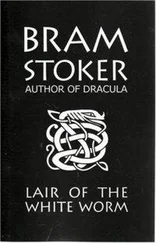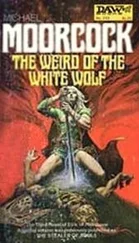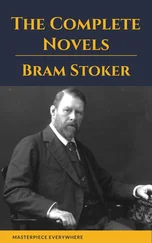Soon Dracula is stalking Harker’s fiancée Wilhelmina and her friend Lucy. When Lucy begins to fall ill her blood is drained and she appears to die. However, by night she is resurrected as a vampire, where she begins victimizing children. Professor Abraham Van Helsing recognizes that Lucy has become a vampire, so she is ritually killed. Dracula reacts by infecting Wilhelmina and controlling her mind through telepathy. Ultimately Dracula is pursued back to his castle, as the Professor knows that the only way to save Wilhelmina is to put an end to Dracula.
Stoker’s book is made real by the way it is written. It comprises various accounts narrated by different characters and includes excerpts from newspaper reports. The result is a story that has the illusion of truth. This style of writing is known as epistolary and was also used by Mary Shelley in writing Frankenstein . From an author’s point of view the technique means that a story can be told in such a way that the central characters do not need to witness everything themselves and the inclusion of newspaper excerpts means that events can happen without any of the characters having been their as witnesses. Inevitably this approach mimics the way things happen in real life so that scenarios (fictitious events) take on the quality of actual events. Readers are left wondering whether they are reading the imaginings of an author or reportage, thereby blurring the boundary between fiction and non-fiction. Needless to say, this enables the reader to readily suspend their disbelief and become wholly absorbed by the story.
It would be difficult to think of another novel that has influenced a genre quite so much as Dracula , except perhaps Frankenstein . Together they form the foundation upon which most subsequent horror stories rest. In many respects the vampire and the monster have now become caricatures of themselves, but a read of the original books make’s one realize just how dark and Gothic those characters were upon first inception.
There have been so many permutations of the Dracula and vampire theme in modern culture in print, television and film that it is easy to forget how it all started, with the publication of Dracula the novel in 1897. In truth, Bram Stoker did not invent the idea of the vampire by any means, but his story brought together the various myths and legends that were already in existence into a cohesive whole. Stoker’s tale of Count Dracula caught the imagination of a Victorian audience and continues to appeal to readers to this day.
Stories of vampires had trickled through to England from Eastern Europe for centuries before Stoker was inspired to write. European folklore included tales of vampires from the late mediaeval period and these became embellished and retold as popular fireside stories. Perhaps the earliest example of a real person being accused of vampiric traits was a Croatian named Jure Grando. It was claimed that he rose from death to feast on the blood of the living and had to be decapitated when a stake through the heart proved ineffective.
At that time, in the late 17th century, people were entirely open to notions of witchcraft and supernatural powers as science and empiricism had yet to come to the fore. Word of mouth, secondhand accounts and circumstantial evidence were taken as proof in a world where they served as likely explanations for things that people found frightening and disturbing. People were religious too, so they were entirely indoctrinated with the notion of heaven and hell, and good and evil. We can never know the truth of the Grando case, but it certainly caught the public imagination.
By the 18th century things were beginning to get out of hand. Many people, both dead and alive, were accused of vampirism and found themselves staked or beheaded whenever unexplained misfortune fell upon others in the community. In cultures where illnesses and diseases were not understood scientifically it was only natural to presume that someone had cast a spell on them or done something unspeakable to them. So it was that perfectly innocent neighbours became scapegoats and were slain as vampires or else had their corpses disinterred only to die a second time.
By the 19th century the subject of vampires had entered the realm of considered debate. Many scholars denounced the whole idea, pointing out that all reports of vampires were nothing more than fictitious stories based on anecdote and hearsay. Furthermore, there wasn’t a scrap of scientific evidence that it was possible for people to become ‘the undead’ and transform into vampires under cover of darkness. Nevertheless, many people persisted in their beliefs – especially in the more remote regions of Eastern Europe.
Dedication CONTENTS Cover Title Page Copyright History of Collins Life & Times Dedication Chapter 1 Chapter 2 Chapter 3 Chapter 4 Chapter 5 Chapter 6 Chapter 7 Chapter 8 Chapter 9 Chapter 10 Chapter 11 Chapter 12 Chapter 13 Chapter 14 Chapter 15 Chapter 16 Chapter 17 Chapter 18 Chapter 19 Chapter 20 Chapter 21 Chapter 22 Chapter 23 Chapter 24 Chapter 25 Chapter 26 Chapter 27 Chapter 28 Classic Literature: Words and Phrases About the Publisher
To my friend Bertha Nicoll with affectionate esteem.
CONTENTS
Cover
Title Page THE LAIR OF THE WHITE WORM Bram Stoker
Copyright
History of Collins
Life & Times
Dedication
Chapter 1
Chapter 2
Chapter 3
Chapter 4
Chapter 5
Chapter 6
Chapter 7
Chapter 8
Chapter 9
Chapter 10
Chapter 11
Chapter 12
Chapter 13
Chapter 14
Chapter 15
Chapter 16
Chapter 17
Chapter 18
Chapter 19
Chapter 20
Chapter 21
Chapter 22
Chapter 23
Chapter 24
Chapter 25
Chapter 26
Chapter 27
Chapter 28
Classic Literature: Words and Phrases
About the Publisher
CHAPTER 1 CONTENTS Cover Title Page THE LAIR OF THE WHITE WORM Bram Stoker Copyright History of Collins Life & Times Dedication Chapter 1 Chapter 2 Chapter 3 Chapter 4 Chapter 5 Chapter 6 Chapter 7 Chapter 8 Chapter 9 Chapter 10 Chapter 11 Chapter 12 Chapter 13 Chapter 14 Chapter 15 Chapter 16 Chapter 17 Chapter 18 Chapter 19 Chapter 20 Chapter 21 Chapter 22 Chapter 23 Chapter 24 Chapter 25 Chapter 26 Chapter 27 Chapter 28 Classic Literature: Words and Phrases About the Publisher
Adam Salton Arrives CONTENTS Cover Title Page THE LAIR OF THE WHITE WORM Bram Stoker Copyright History of Collins Life & Times Dedication Chapter 1 Chapter 2 Chapter 3 Chapter 4 Chapter 5 Chapter 6 Chapter 7 Chapter 8 Chapter 9 Chapter 10 Chapter 11 Chapter 12 Chapter 13 Chapter 14 Chapter 15 Chapter 16 Chapter 17 Chapter 18 Chapter 19 Chapter 20 Chapter 21 Chapter 22 Chapter 23 Chapter 24 Chapter 25 Chapter 26 Chapter 27 Chapter 28 Classic Literature: Words and Phrases About the Publisher
Adam Salton sauntered into the Empire Club, Sydney, and found awaiting him a letter from his grand-uncle. He had first heard from the old gentleman less than a year before, when Richard Salton had claimed kinship, stating that he had been unable to write earlier, as he had found it very difficult to trace his grand-nephew’s address. Adam was delighted and replied cordially; he had often heard his father speak of the older branch of the family with whom his people had long lost touch. Some interesting correspondence had ensued. Adam eagerly opened the letter which had only just arrived, and conveyed a cordial invitation to stop with his grand-uncle at Lesser Hill, for as long a time as he could spare.
“Indeed,” Richard Salton went on, “I am in hopes that you will make your permanent home here. You see, my dear boy, you and I are all that remain of our race, and it is but fitting that you should succeed me when the time comes. In this year of grace, 1860, I am close on eighty years of age, and though we have been a long-lived race, the span of life cannot be prolonged beyond reasonable bounds. I am prepared to like you, and to make your home with me as happy as you could wish. So do come at once on receipt of this, and find the welcome I am waiting to give you. I send, in case such may make matters easy for you, a banker’s draft for £200. Come soon, so that we may both of us enjoy many happy days together. If you are able to give me the pleasure of seeing you, send me as soon as you can a letter telling me when to expect you. Then when you arrive at Plymouth or Southampton or whatever port you are bound for, wait on board, and I will meet you at the earliest hour possible.”
Читать дальше












